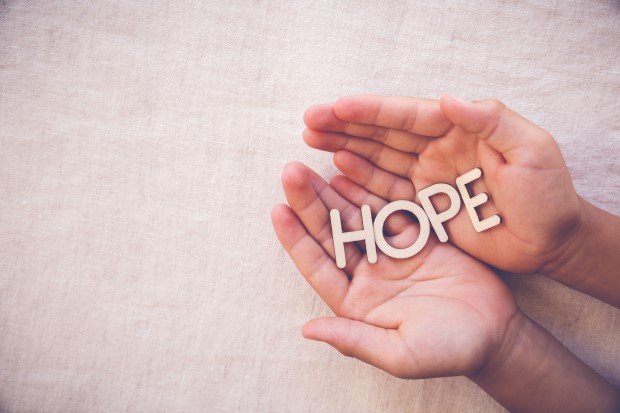
Hope is the spring of all the seasons within you. Hope is not just a fleeting moment or a temporary feeling that things will get better. It’s a foundation for a lifestyle that reflects everything you do and everything you are. You can use hope to help motivate you to think positively and be proactive by making the most of every situation. Learning to manage your thoughts more effectively will help you respond in a healthy way, so nothing ever gets the best of you.
It’s important to distinguish hope from resilience. Resilience is the ability to bounce back from a bad situation. If your house burns down or you experience other trauma, resilience is what enables you to survive it and move forward. Hope is often focused on specific goals. It’s the positive conviction that by doing what you need to do — by filing the insurance claims, rebuilding, and taking stock — you will accomplish what you need to for a successful future. Indeed, it’s the faith that with love and determination, you can overcome whatever challenges you face.
Hopeful people believe that everything in life is meaningful. When bad things happen, instead of feeling like victims, hopeful people accept what occurred and see the bigger picture and the part they are playing. They know that good often emerges from pain. This is different from blind optimism. Hope is pragmatic and practical; it guides someone to make the best, most effective choices. Hope is the belief that by making the best choices — by managing your money, fostering healthy relationships, managing your time, eating healthy, practicing mindfulness — you will improve your life and the world. You won’t escape storms, but you will survive them and do better next time.
Hope is not necessarily something you are born with. You grow into it as you face adversity and choose to learn from your struggles. This positive mindset gives you the confidence to overcome your biggest fears and toughest challenges.
Here are 5 ways to create a mindset of hope:
Be intentional
Overcoming fear is essential to developing a hopeful mindset. Take charge and know that it is within your control to become more hopeful. Think about what you need most in your life and then do it. It can be something as small as taking a break to go for a walk, taking a short nap, or reading your favorite book. When you take care of yourself even for a few minutes a day, these small moments accumulate and will change your attitude for the better.
Reflect and appreciate
Silently reflect on what you are grateful for, as I discuss in chapter 10. Take time every day to appreciate and feel a sense of connection to yourself and the world around you.
What if you were told today was the last day of your life? How would you want to live it? Asking this question shifts our focus to who and what we are grateful for, and away from the daily petty annoyances that tend to grab our attention.
Reach out and help others
Do something good for someone else. Buy your friend a cup of coffee. Send someone flowers. Cook a meal for friends. Each time we make a difference in the lives of others, we create hope in ourselves and add more peace and hope to the world. Knowing this will give you hope.
Set goals
Goals help you focus on the positive outcomes you are working toward, instead of what you no longer have or what’s not working for you. Your goals don’t have to be accomplished all at once. Break them down into a series of small steps, and celebrate your successes along the way; this is the best way to keep yourself motivated. Start by prioritizing your top goals and move down the list to smaller ones. Remember, make sure your goals reflect what you want, not what your parents, teachers, peers, or employers expect.
Visualize success
Create a mental image of all the different paths you can explore to achieve your goals. Think of all the creative ways to overcome, rather than avoid, any obstacles you may face along your journey. Use positive self-talk and humor to learn to enjoy the process of attaining your goals. Visualize yourself achieving your goals. How do you feel? What are you grateful for? What have you learned? Who helped you along the way?
All of the self-care approaches discussed in this book are designed to help you trust and have faith in yourself. Know that you can get through any challenges that life throws your way. Developing healthy daily habits — which include mindfulness, journaling, moving, adequate sleep, gratitude, financial literacy, time management, enjoying nature, eating healthy, and asking for help when needed — provide the key ingredients for the most important aspect of self-care: hope.
Excerpted from the book from Be You, Only Better: Real-Life Self-Care for Young Adults (And Everyone Else). Copyright ©2021 by Kristi Hugstad. Printed with permission from New World Library — www.newworldlibrary.com .


